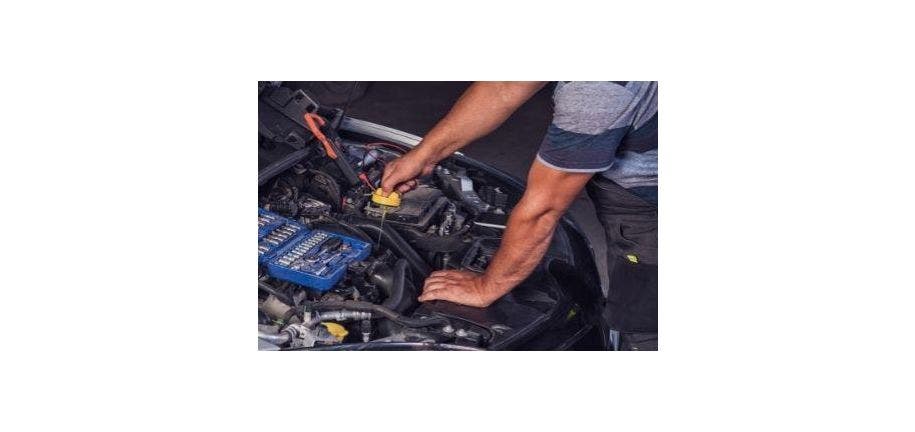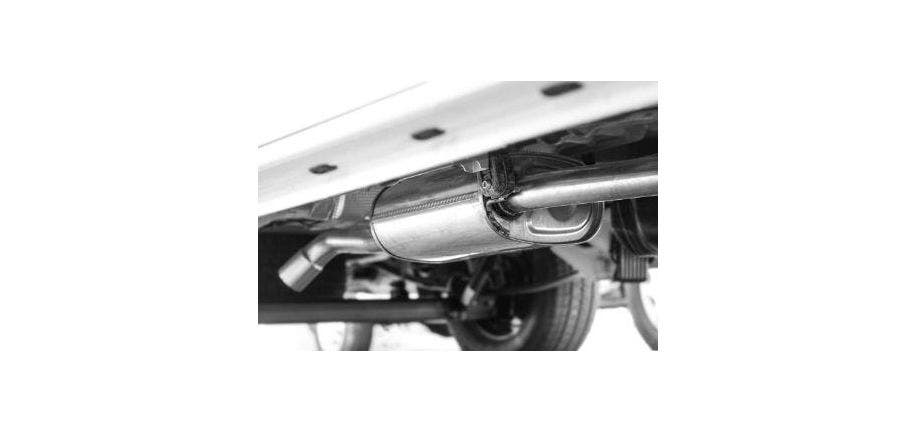Auto Mechanics' Guide to Diagnosing and Repairing Common Car Problems
As an auto mechanic or DIYer, knowing the common car issues and how to diagnose them is essential for keeping your vehicle in top shape. Whether you're dealing with malfunctioning brakes, a check engine light that won't go away, or any other issue, this guide will help you quickly identify the problem and find the best solution. Plus, we'll provide tips on where to find high-quality replacement parts and performance upgrades to keep your car running smoothly.
Common Car Issues and How to Diagnose Them: A Guide for Auto Mechanics
As an auto mechanic, encountering common car issues is a part of your everyday job. From engine misfires to battery problems, it's essential to know how to diagnose these problems accurately. One way of doing this is by using diagnostic tools that help you pinpoint the root cause of the problem quickly. However, sometimes all it takes is a visual inspection or listening carefully for unusual noises when the vehicle runs.
Using high-quality replacement parts ensures long-lasting and reliable repairs for common car issues.
Once you've diagnosed the issue, repairs may be necessary. As an auto mechanic, having access to high-quality replacement parts ensures that your repairs are long-lasting and reliable. Whether it's replacing spark plugs or repairing brakes, always ensure that you're working with top-performing performance parts suitable for your customer's specific automotive needs. By addressing these common car issues promptly and efficiently with quality repair work utilizing exceptional parts as needed; you are sure to have satisfied customers who will keep coming back for more repairs in the future!
Introduction to Car Issues
When it comes to car issues, there are a few things that every auto mechanic and DIYer should be aware of. Firstly, understanding the warning lights on your dashboard can save you from costly repairs down the road. It's important to know what each light indicates and take immediate action when necessary.
Secondly, common sounds and smells can also indicate car problems that need attention. Squeaking brakes or a burning smell could mean it's time for repairs or maintenance.
Lastly, weather conditions can affect your car's performance. Extreme temperatures in particular can put added strain on certain parts of your vehicle such as the battery or tires. Being aware of these factors will help you diagnose issues quicker and keep your vehicle running smoothly longer without requiring frequent trips to a mechanic for repair work.
Knowing the Basics of Car Mechanics
Cars are an essential part of our everyday lives, and it's important to know the basics of car mechanics to keep them running smoothly. Understanding the different parts of a car and their functions is key to diagnosing any issues that may arise. Regular maintenance checks can also prevent future repairs.
Here are some basic tools every auto mechanic should have in their toolkit:
- Wrenches
- Screwdrivers (flathead and Phillips)
- Pliers
- Socket set
- Jack stands
Regularly checking for wear and tear on belts, hoses, brakes, and tires can save time and money on major repairs down the line. Knowing when to replace or repair these parts is crucial for keeping a car functioning properly.
Overall, taking care of your vehicle through regular inspections and preventive measures will ensure its longevity on the road.
The Importance of Diagnosing Car Issues
Why guessing isn't an option when diagnosing car issues:
Diagnosing car issues is a complex process that requires accuracy and precision. Guessing the problem may lead to unnecessary repairs, which can be costly for customers. It's important for mechanics to use their knowledge and expertise to accurately diagnose the issue before starting any repair work.
How proper diagnosis can save time and money in repairs:
Proper diagnosis of car issues can save both time and money in repairs. By identifying the root cause of a problem, mechanics can avoid replacing parts that aren't necessary or won't fix the issue. This means customers won't have to pay for unnecessary repairs, saving them money.
The role of technology in modern auto diagnostics:
Technology has revolutionized auto diagnostics by providing tools such as diagnostic software, scanners, sensors, and more precise testing equipment. These tools enable mechanics to quickly identify problems with greater accuracy than ever before. As cars become increasingly complex due to new technologies like electric powertrains or autonomous driving systems - it's essential that mechanics stay up-to-date with these advancements so they can service modern vehicles properly.
Common Car Issues and Their Symptoms
Engine Problems: If you hear a knocking sound or the engine doesn't start, it could be an issue with your spark plugs or fuel system. Other possible symptoms include poor acceleration, rough idling, and excessive exhaust smoke.
Brake Problems: Squeaking, grinding or vibration when braking are warning signs that something is wrong with your brakes. Other potential issues include brake fluid leaks and a soft brake pedal.
Electrical Problems: Electrical problems can manifest as flickering lights, dead battery or malfunctioning accessories like power windows and door locks. Be sure to check fuses before assuming the worst-case scenario of a faulty alternator or starter motor failure.
Engine Problems
Dealing with engine problems can be a major headache for any auto mechanic. Overheating is one of the most common issues faced by drivers, which can be caused by low coolant levels or a malfunctioning thermostat. Misfiring is also another problem that mechanics often encounter, resulting in rough idling and poor fuel economy. Lack of power is yet another issue that drivers face frequently, where the vehicle struggles to accelerate even when pressing down on the gas pedal.
To diagnose these problems accurately, it's crucial to have high-quality replacement parts as well as top-performing performance parts at your disposal. As an auto mechanic or DIYer, investing in reliable diagnostic tools and staying up-to-date with industry trends will help you tackle engine problems more efficiently. Remember to always prioritize safety and ensure that all repairs are done correctly before sending vehicles back on the road!
Brake Problems
If you're experiencing brake problems, it's important to address them immediately for your safety on the road. Here are some common issues and possible causes:
- Spongy Brake Pedal:
- This can be caused by air in the brake lines or a leak in the system.
- Grinding Noise While Braking:
- Worn down brake pads or rotors can cause this issue.
- Vibrations While Braking:
- Warped rotors or uneven wear on the tires can be culprits behind this problem.
As an auto mechanic, make sure to thoroughly inspect and diagnose any of these issues before making repairs to ensure that your customer is safe while driving their vehicle.
Electrical Problems
Dead Battery or Alternator Issues: One of the most common electrical problems in cars is a dead battery or issues with the alternator. This can lead to difficulty starting the car, dimming lights, and even stalling while driving. To diagnose this issue, auto mechanics should first check the battery voltage and perform a load test to determine if it needs replacement. If the battery is fine, then checking for faults with the alternator may be necessary.
Malfunctioning Starter Motor: Another common electrical issue among cars is a malfunctioning starter motor. The symptoms include grinding noise when starting and failure to start altogether. In this case, auto mechanics should inspect both the starter motor itself as well as wiring connections leading up to it for any signs of damage or corrosion.
Flickering Headlights: A less severe yet still frustrating electrical problem that car owners experience are flickering headlights while driving at night-time hours. This could indicate an issue such as loose bulbs or faulty wiring within headlight components themselves; however, before replacing anything immediately try cleaning bulb contacts which sometimes fix such issues quickly!
Diagnosing Car Issues
When diagnosing car issues, a visual inspection can provide crucial clues to the problem. Look for any leaks, wear and tear on belts or hoses, and signs of corrosion or damage in the engine compartment. Pay attention to unusual sounds or smells as well.
Diagnostic tools like OBD scanners are essential in identifying problems with modern cars. These tools can read error codes stored in the car's computer system and help pinpoint issues with specific components. Investing in a quality scanner can save time and money when troubleshooting common car problems.
Test driving the car is another important step in diagnosing issues that may not be immediately obvious during a visual inspection. Take note of any changes to acceleration, braking, steering, or handling. Also pay attention to any warning lights that appear on the dashboard while driving.
Visual Inspection
When it comes to visual inspection, there are a few key areas that every auto mechanic should pay attention to. Firstly, checking for leaks under the car is crucial in identifying any potential issues with the fuel or oil system. Secondly, inspecting engine belts and hoses can help identify wear and tear that could lead to more significant problems down the line. Lastly, examining brake pads and rotors for wear is essential in ensuring safe driving conditions for your clients.
By giving these areas proper attention during a visual inspection of a vehicle, you can catch small issues before they become large ones, saving your clients both time and money in repairs. As an auto mechanic or DIYer looking to provide high-quality services or maintain their own vehicles effectively, regular visual inspections are vital parts of being responsible drivers on the road today.
Diagnostic Tools
When it comes to diagnosing car issues, having the right tools at your disposal can make all the difference. Here are some diagnostic tools every auto mechanic and DIYer should have in their arsenal:
- Using a code reader to check for error codes:
- A code reader is an essential tool for diagnosing engine problems. It plugs into your car's OBD-II port (usually located under the dashboard) and retrieves any error codes that may be present in your car's computer system.
- Testing battery voltage with a multimeter:
- If you're experiencing electrical problems with your vehicle, one of the first things you'll want to check is the battery voltage. A multimeter allows you to do this quickly and accurately by measuring both AC and DC voltage, as well as resistance and amperage.
- Checking fuel pressure with a fuel gauge:
- Fuel delivery issues are another common problem that can cause poor performance or even prevent your vehicle from starting altogether. By using a fuel pressure gauge, you can test whether there's adequate pressure in your car's fuel system.
Having these tools on hand will help ensure that you're able to diagnose any issue quickly and accurately - saving yourself time, money, and potential frustration down the road!
Test Driving the Car
When test driving a car, it's crucial to keep your senses on high alert. Listen for unusual noises while driving and pay attention to any vibrations you feel in the steering wheel or brakes. These could be early warning signs of potential issues that need to be addressed.
Another important aspect of test driving is noticing any hesitation or loss of power during acceleration. This could indicate problems with the engine or fuel system, which can escalate quickly if left unchecked. By being vigilant during your test drive and addressing any concerns promptly, you can ensure that your vehicle stays performing at its best for longer periods of time.
Repairing Car Issues
When it comes to repairing car issues, auto mechanics and DIYers alike need top-quality replacement parts. Whether it's a faulty alternator or a damaged water pump, having reliable parts is crucial for ensuring optimal performance and safety on the road. But with so many options out there, how do you know which ones to choose? Look for reputable brands that offer both high-quality replacement parts as well as top-performing performance parts.
One of the most common car issues that require repair is engine trouble. From misfiring cylinders to overheating engines, there are several potential causes of noisy or shaky engines. To diagnose these problems accurately, mechanics should use diagnostic tools like OBD scanners and compression testers. In some cases, replacing worn-out spark plugs or fuel injectors might fix the issue; in others, more significant repairs may be necessary such as replacing the entire engine block or head gasket.
DIY Repairs
Maintaining your car is essential to keep it running smoothly and safely. Here are three DIY repairs that you can do at home without much experience:
1) Changing the Oil and Filter – Regular oil changes help extend the life of your engine. To start, gather a new filter, oil pan, wrenches, funnel, and fresh oil. Follow these steps: drain old oil into a pan; replace the filter; add new oil according to manufacturer’s instructions.
2) Replacing Brake Pads – Worn brake pads can decrease stopping power which is dangerous. Gather some basic tools including a jack stand or hydraulic lift kit along with replacement brake pads for your make/model vehicle. Remove old brake pads from calipers using pliers while being careful not to damage components around them then install new ones in their place.
3) Fixing a Flat Tire – It's important to know how to change a flat tire before getting stranded on the road. Have on hand: spare tire (preferably with good tread), lug wrench or socket set so you can loosen/tighten lug nuts holding wheel onto hub axle assembly securely fastened near where repair work will be done (i.e., behind rear passenger seat). Start by loosening all lug nuts before lifting up affected wheel/rim with jack handle until clear ground surface then remove remaining nuts/hardware followed by damaged tire itself leaving only rim exposed ready for insertion of spare one in its place.
By taking care of these simple repairs yourself rather than paying someone else, you'll save money while learning valuable skills as an auto mechanic!
When to Call a Professional
When it comes to diagnosing engine problems, it's best to call a professional. While some issues may be easy to identify and fix on your own, others may require specialized tools and knowledge. Plus, misdiagnosing an issue can lead to further damage down the line.
If you're dealing with complex electrical issues or transmission malfunctions, it's also a good idea to leave the repairs in the hands of a professional auto mechanic. These components are highly intricate and require precise knowledge and skill to repair correctly. Attempting these repairs yourself could result in costly mistakes that could have easily been avoided by seeking professional help.
Remember that while DIY repairs can be cost-effective and satisfying for small jobs or routine maintenance tasks, there are times when calling a professional is the safest bet for both your car and your wallet.
Replacing Parts
When it comes to replacing parts, there are a few upgrades that can really make a difference in your vehicle's performance. Upgrading to high-performance air filters can increase airflow and improve engine power output. Installing aftermarket exhaust systems not only improves the sound of your car, but also enhances its power output.
Additionally, swapping out worn suspension components can greatly improve handling and stability on the road. Whether you're looking for better performance or simply need to replace worn-out parts, these upgrades are worth considering for any auto mechanic or DIYer looking to optimize their vehicle's function and performance.
Conclusion
In conclusion, being a successful auto mechanic requires expertise and the right tools. With this guide, you now have the knowledge to diagnose common car issues and provide effective solutions. Remember to always prioritize safety when working on vehicles and invest in high-quality replacement parts for reliable repairs.
Additionally, as DIYers looking for top-performing performance parts, it's important to do thorough research before making any purchases. By choosing reputable brands and consulting with experienced professionals, you can ensure that your modifications enhance both the performance and longevity of your vehicle.





















